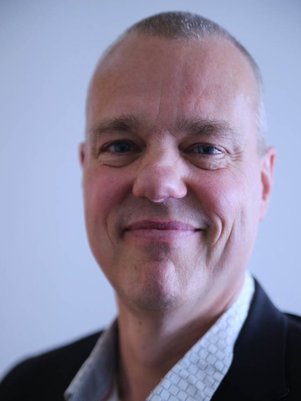Prof.dr.ir. E. (Erik) Schlangen
Profile
2012 - Now: Professor in the chair of Experimental Micromechanics
2015 - Now: Guest Professor, Southeast University, Nanjing, China
2003 - 2012: Associate Professor, Delft University of Technology
1996 - 2007: Senior Researcher SGS-Intron, The Netherlands
1993 - 1995: Post-Doc NIST, Gaithersburg, MD, USA
1993: PhD Delft University of Technology
1989: MSc Eindhoven University of Technology
Research
My research focuses on the development of experimental techniques to measure (mechanical) properties of materials. Furthermore the focus is on the development of models to support the testing and simulate the material behaviour. Aim is to explain failure mechanisms in materials and structures. Explanation of failure and degradation mechanisms are important to be able to find solutions to stop or slow down the degradation or develop strategies to prevent them in the future. The techniques are applied to develop new materials that are more durable, sustainable, self-healing and self-sensing and can be 3D-printed.
Responsible for:
- CIE5146 - Micromechanics & Computational Modelling of Building Materials
- CIE 4030 - Research Methodology
Contributing to:
- CIE4880 - Road Materials
- AE4X10 - Self Healing Materials
- CIE5100 - Repair and Maintenance of Building Materials
- CIE5102 - Forensic Building Material Engineering
- CIE5110 - Concrete Science and Technology
- MMC - Multiscale Modelling Course for Materials
- CMC - Concrete Microscopy Course
- Zhang, H., Šavija, B., Chaves Figueiredo, S., Lukovic, M., Schlangen, E. (2016). Microscale Testing and Modelling of Cement Paste as Basis for Multi-Scale Modelling. Materials 9 (11), 907.
- Šavija, B., Luković, M., Schlangen, E. (2016). Influence of Cracking on Moisture Uptake in Strain-Hardening Cementitious Composite. Journal of Nanomechanics and Micromechanics.
- Su, J.F., Schlangen, E. (2012). Synthesis and physicochemical properties of high compact microcapsules containing rejuvenator applied in asphalt. Chemical engineering journal 198, 289-300.
- Jonkers, H.M., Thijssen, A., Muyzer, G., Copuroglu, O., Schlange, E. (2010). Application of bacteria as self-healing agent for the development of sustainable concrete. Ecological engineering 36 (2), 230-235.
- Qian, S.Z., Zhou, J., Schlangen, E. (2010). Influence of curing condition and precracking time on the self-healing behavior of engineered cementitious composites. Cement and concrete composites 32 (9), 686-693.
- Liu, Q., Schlangen, E., García, Á., van de Ven, M. (2010). Induction heating of electrically conductive porous asphalt concrete. Construction and Building Materials 24 (7), 1207-1213.
- Çopuroğlu, O., Schlangen, E. (2008). Modeling of frost salt scaling. Cement and Concrete Research 38 (1), 27-39.
- Schlangen, E., Garboczi, E.J. (1997). Fracture simulations of concrete using lattice models: computational aspects. Engineering fracture mechanics 57 (2), 319-332.
- Editor of Construction and Building Materials
- Editor in Chief (Europe) of Advances in Concrete Construction
- Editorial Board of Cement & Concrete Composites
- Board Member IA-FraMCoS
- Member RILEM
- Organiser Rilem-week 2018
- De Rooij, M.R., Van Tittelboom, K., De Belie, N., Schlangen, E.. Self-healing phenomena in cement-based materials. State-of-the-Art report of RILEM Technical Committee, 2013.
- Schlangen, E (2014). Self-healing roads. CCN Video: Make create innovate. (2014, July 17).
- Schlangen, E. (2012). A self-healing asphalt, TED-talk.
- Schlangen, E. (2013). Selbstheilender asphalt, VOX-TV-program.
- Schlangen, E. & Jonkers, H.M. (2013) Intiligente strasse, Prosieben-TV-program.
- Schlangen, E. (2014) Bröckelnde Infrastruktur - Was hilft gegen marode Strassen und Brücken?, Arte-TV-program.

Erik Schlangen
Professor of Experimental MicroMechanics
- +31 6 53737524
- +31 15 27 86535
- Erik.Schlangen@tudelft.nl
-
Faculty of Civil Engineering and Geosciences
Building 23
Room: 6.17
Availability:
Monday till Friday
Department:
Materials, Mechanics, Management & Design (3Md)
Section:
Materials and Environment
Chair / Research:
Experimental MicroMechanics
Secretary:
Jacqueline van Unen-Bergenhenegouwen
Dr.ir. H.E.J.G. (Erik) Schlangen
-
Ancillary activities
Partner in Eralcon
Editor Construction and Building Materials (Elsevier)
Editor in Chief (Europe) Advances in Concrete Construction
- ancillary activities
-
-
2023-01-23 - 2025-01-31
Consultancy / research and other